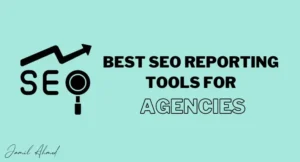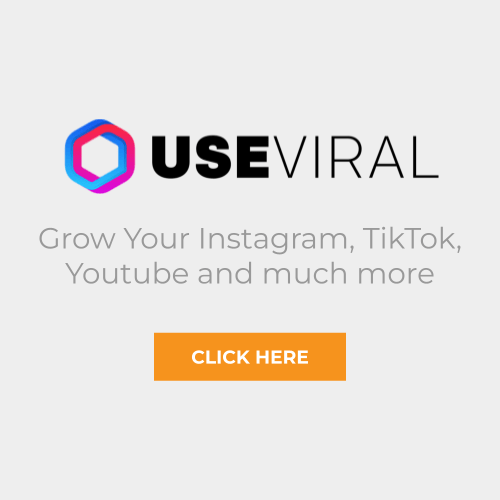Home » Blog » Personal Branding »
How To Create a Personal Branding Strategy


My step-by-step guide covers everything from defining your brand to creating a website, SEO and using social media to your advantage. Start building a strong personal brand today!
How To Create a Personal Branding Strategy
A personal branding strategy is essential for standing out and establishing yourself as a thought leader in your industry.
Building a strong personal brand has become more important with the digital landscape constantly evolving.
A personal branding strategy can help you display your unique talents, values, and knowledge. This will put you in a position of authority in your specialism.
Start building a personal branding strategy that elevates your professional image and creates numerous opportunities for your career or business.
A strong personal brand can attract potential clients, employers, and partners and increase your visibility in your industry.
Communicate your values and skills consistently. This will help you build trust and credibility with your target audience. This, in turn, will lead to long-term success and growth in your chosen field.
Define Your Personal Brand
Assessing your personality traits and values
Defining your personal brand starts with a deep understanding of your personality traits, strengths, and values.
Take the time to reflect on your core beliefs, passions, and skills. Consider how you can differentiate yourself from others in your industry by highlighting your unique experiences, perspectives, and expertise.
Be genuine in presenting yourself; authenticity is key to creating a strong connection with your target audience.
Identifying your brand archetype and unique selling points
Brand archetypes are universally recognized characters or personas that help define your brand’s identity and storytelling.
Examples of brand archetypes include the Hero, the Creator, and the Explorer. Identifying your brand archetype can help you communicate your message more effectively and create a consistent narrative for your personal brand.
To determine your unique selling points (USPs), analyze your strengths and accomplishments, and consider what sets you apart from your competitors.
Identify your Unique Selling Points (USPs). These should convey the value you offer to your audience. Examples could include problem-solving skills, expertise in your sector, or a special service.
Defining your brand archetype and USPs lays the foundation for a compelling personal brand that resonates with your target audience.
Determine Your Target Audience to Build your Brand
Analyzing your ideal audience segments
Your target audience is the people most likely to be interested in your personal brand, products, or services. To identify your ideal audience segments, consider age, gender, location, occupation, and interests.
Think about who will benefit most from your expertise and offerings. By defining your target audience, you can create personalized content and messaging that appeals to their needs, interests, and preferences.
Understanding audience demographics, interests, and needs
Once you’ve identified your ideal audience segments, dive deeper into their demographics, interests, and needs. Research online resources, conduct surveys, or engage with your audience on social media to gather insights.
Understand your audience. Get to know their background, preferences, and pain points. This will help you tailor your personal branding strategy.
The strategy should address their concerns, answer their questions, and offer solutions that are valuable to them.
This targeted approach will help you build strong relationships with your audience, establishing trust and credibility.
Create a Brand Identity
Designing a consistent visual brand (logo, colors, fonts)
A strong brand identity helps you stand out in a crowded market and leaves a lasting impression on your target audience.
To create a consistent visual brand, choose a logo, color palette, and typography that reflect your personal brand values and personality.
Your logo should be unique and unforgettable. The colors and fonts you choose should evoke the feelings and qualities you wish to communicate.
Consistency is essential. Use the same visual elements on all your online and offline materials. This includes your website, social media profiles, and business cards.
Developing a unique voice and tone for your content
Your brand voice is how you communicate with your audience through your content.
Consider your personal brand values, target audience, and desired emotions when developing a unique voice and tone. This will help create the desired effect for your audience.
Your voice should be consistent across all your content, whether a blog post, social media update, or email. This consistency helps your audience recognize and connect with you, building trust and loyalty over time.
Remember to keep your tone authentic and genuine, as this will resonate with your audience and foster deeper connections.
Develop Your Content Strategy
Types of content (blog posts, guest posts, videos, podcasts)
A well-rounded content strategy is crucial for showcasing your expertise and engaging your target audience. Consider creating various types of content that cater to different preferences and platforms.
Blog posts allow you to share in-depth insights and can be easily shared on social media. Guest posts on reputable websites can increase your visibility and credibility.
Videos are a great way to form personal connections with your audience. Podcasts are convenient for busy people, as they can be easily consumed.
Diversifying your content types ensures you reach a wider audience and keep them engaged.
Establishing a content creation schedule
Consistency is essential in building a strong personal brand. Establish a content creation schedule that works for you and sticks to it.
Staying organized and focused helps build trust with your audience. They will know when to expect new content from you.
A content calendar can be a helpful tool for planning and tracking your content creation efforts. Be realistic about the frequency of your content, considering your other commitments and the time required to create high-quality content.
Aligning content with your brand identity and target audience
Your content should reflect your brand identity and resonate with your target audience. When planning your content, ensure that it aligns with your brand values, unique selling points, and the needs of your audience.
Identify topics that showcase your expertise and address your target audience’s pain points or interests.
Creating valuable and relevant content for your audience will strengthen your personal brand, build trust, and foster long-lasting relationships.
Build Your Online Presence
Creating a personal website and blog
A personal website and blog serve as the foundation of your online presence. They provide a central hub where potential clients, employers, or collaborators can learn more about you, your expertise, and your content.
When creating a personal website, ensure it’s user-friendly, visually appealing, and easy to navigate. Include essential pages, such as an about page, a portfolio showcasing your work, a blog, and a contact page.
Having a blog on your website is beneficial. Publishing content regularly helps to attract more visitors. It also boosts your search engine rankings.
Optimizing social media profiles for brand consistency
Your social media profiles are an extension of your personal brand. To maintain brand consistency, ensure your profile pictures, cover images, and bios reflect your brand identity across all platforms.
Ensure consistency by using the same colors, fonts, and logos on your website.
Include your unique selling points and a clear call to action in your bio.
This creates a cohesive brand experience for your audience and helps build recognition and trust.
Leveraging relevant social media platforms for personal branding
Different social media platforms cater to different audiences and content types.
- Identify the platforms that are most relevant to your target audience.
- Choose the content that you create carefully.
- Maximize your personal branding efforts.
For example, LinkedIn is a professional networking platform ideal for sharing industry insights and connecting with potential clients or employers.
Instagram is a visual platform for sharing images and short videos showcasing your creative work or personal style.
You’ll increase your visibility and reach a wider audience by leveraging the right platforms for your brand.
Network and Collaborate
Engaging with your audience on social media
To build a strong personal brand, engaging with your audience on social media is essential. Respond to comments, answer questions, and appreciate shares and likes.
This helps you build a community around your brand and fosters loyalty among your followers.
Engaging with your audience helps you understand their needs, preferences, and pain points. This knowledge can inform your content strategy and make your brand more relevant to them.
Participating in industry events and online forums
Industry events, conferences, and online forums provide excellent opportunities to network with professionals and showcase your expertise.
Attend events relevant to your niche, and participate in panel discussions or workshops. Join online forums and discussion groups to share your insights, ask questions, and engage in meaningful conversations.
By actively participating in these platforms, you can establish yourself as a knowledgeable and reliable resource in your industry.
Building partnerships and collaborations with thought leaders
Collaborating with thought leaders and influencers in your niche can significantly boost your personal brand.
Partnerships and collaborations can take many forms, such as guest blogging, podcast interviews, co-hosting webinars, or working on joint projects.
These collaborations allow you to tap into your partners’ audiences, increasing your visibility and credibility. Additionally, working with respected individuals in your field can enhance your reputation and help you learn from their expertise and experience.
Implement SEO and Marketing Techniques
Utilizing SEO best practices to increase visibility
To ensure your personal brand reaches a broader audience, it’s crucial to implement SEO best practices.
- Optimize your website and blog content for relevant keywords.
- Ensure your site is mobile-friendly.
- Improve your site’s loading speed.
Additionally, create high-quality, shareable content that provides value to your audience and includes internal and external links to reputable sources.
Following these guidelines can improve your search engine rankings and attract more visitors to your website and content.
Implementing personal brand marketing strategies
Marketing your personal brand involves promoting your content, expertise, and offerings to your target audience.
Develop a marketing plan that outlines your goals, target audience, and strategies for reaching them.
This can include email marketing campaigns, social media advertising, and content promotion through various channels.
By implementing a well-rounded marketing strategy, you can increase your brand’s visibility, attract new followers, and grow your professional network.
Exploring guest posting and influencer marketing opportunities
Guest posting and influencer marketing are powerful tactics for boosting your personal brand’s reach and credibility.
Identify websites and blogs in your niche that accept guest posts. This can introduce your content to a new audience and create valuable backlinks to your website.
Additionally, collaborate with influencers in your industry who have a strong following and align with your brand values.
By partnering with influencers, you can leverage their audience and credibility to enhance your personal brand further.
Wrapping Up: Build a Personal Brand
The long-term benefits of a well-crafted personal branding strategy
A well-crafted personal branding strategy can bring numerous long-term benefits to your career and business.
Define your unique selling points to stand out in your field. Identify the right audience to reach out to. Create valuable content regularly to establish yourself as an authority.
Having a strong personal brand can be advantageous. It can bring in new opportunities and clients. Additionally, it can make you stand out from the competition and build trust with your audience.
Investing time and effort into developing a personal branding strategy can lead to lasting career growth and success.
Committing to continuous learning and improvement in personal branding
To maintain and grow your personal brand, committing to continuous learning and improvement is essential.
Stay informed of the newest industry trends, tools, and best practices. This will help your personal brand stay current and adjust to the ever-evolving digital world.
Regularly assess your personal brand’s performance, gather feedback from your audience, and refine your strategies based on data and insights.
Be proactive and dedicated to developing your personal brand. This will create a strong, sustainable foundation for your professional future.
FAQs
How to build/create a personal branding strategy?
Define your personal brand to create a personal branding strategy.
- Determine your target audience.
- Create a brand identity.
- Develop a content strategy.
- Build your online presence.
- Network with others.
- Implement SEO and marketing techniques.
- Monitor and adjust your strategy.
- Commit to continuous improvement.
What is a personal brand/branding strategy?
A personal branding strategy is a comprehensive way to build and promote a professional identity. It focuses on several aspects, such as:
- Brand definition
- Target audience
- Content creation
- Online presence
- Networking
- Marketing techniques
These elements help to increase visibility and credibility.
How do I create a personal branding strategy template?
A personal branding strategy template usually contains the following sections:
- Personal brand definition
- Target audience analysis
- Brand identity development
- Content strategy
- Online presence
- Networking and collaboration
- Marketing and SEO
- Performance monitoring
- Continuous improvement.
What are the key elements of a successful personal branding strategy?
Define your personal brand to create a successful personal branding strategy.
- Determine your target audience.
- Develop a consistent brand identity.
- Create a content strategy.
- Build a strong online presence.
- Network and collaborate with others.
- Implement SEO and marketing techniques.
- Continuously monitor and improve your strategy.
How can I measure the success of my personal branding strategy?
Measure the success of your brand personality strategy by tracking key performance indicators (KPIs).
Examples of KPIs include website traffic, social media engagement, content reach, online mentions, search engine rankings, new opportunities, and audience feedback.
What are some examples of effective personal branding strategies?
Effective personal branding strategies include well-known figures such as Gary Vaynerchuk, Harley Davidson, Jennifer Aaker, Seth Godin, and Brene Brown.
These individuals have created successful personal brands by utilizing their distinct voices, content, and online presence.
How often should I update my personal branding strategy?
Updating your personal branding strategy should be an ongoing process. Regularly assess your brand’s performance, gather feedback, and refine your strategy based on data and industry trends.
Generally, reevaluate your strategy at least once a year or whenever significant changes occur in your professional landscape.
Can I have multiple personal branding strategies for my career or business?
You can have multiple personal branding strategies for your career or business.
It is essential to maintain consistency in your branding efforts. This will help to create a recognizable personal brand for your target audience. Coherence and alignment are essential for this purpose.





